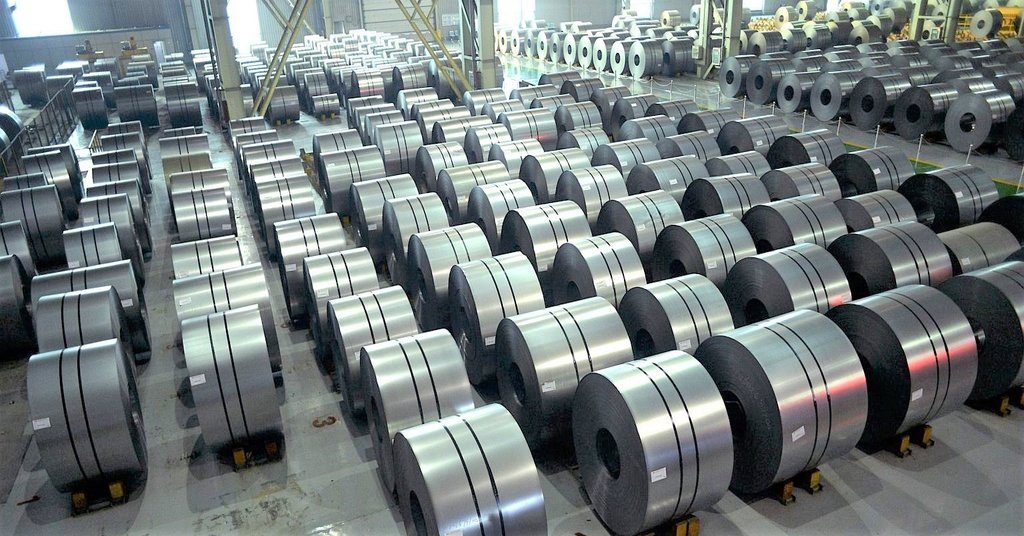The Strength of Progress: Exploring the Wonders of Iron and Steel
Codes of Chapter 72 and 73 : Articles of iron or steel
Introduction
Iron and steel have been at the heart of human civilization, shaping the evolution of societies for centuries. From towering skyscrapers to intricate surgical instruments, these metals are more than just materials; they symbolize strength, innovation, and resilience. But what makes iron and steel so significant, and why do they remain indispensable in modern industries?
In this blog, we’ll dive into the fascinating world of iron and steel, exploring their unique properties, uses, and the role they play in building a sustainable future.
The Origin of Iron: From Stars to Earth
Iron is no ordinary element—it’s forged in the fiery hearts of stars. After massive stellar explosions, iron settles in planetary crusts, making it one of Earth's most abundant elements. Mankind first encountered iron through meteoritic deposits, long before learning to extract it from ore.
This “gift from the heavens” soon became a cornerstone of civilization, ushering in the Iron Age, which marked a shift from stone tools to robust iron weapons and farming implements.
The Rise of Steel: A Game-Changer in Human History
While iron provided strength, it had its limitations—corrosion and brittleness being notable challenges. Enter steel, a revolutionary alloy of iron and carbon. With its enhanced strength, ductility, and resistance to wear, steel has outperformed pure iron in countless applications.
The Industrial Revolution in the 18th and 19th centuries was fueled by steel. Its production techniques—like the Bessemer process—transformed industries, enabling mass production of railroads, bridges, and machinery.
Key Properties of Steel:
- High Strength-to-Weight Ratio: Ideal for skyscrapers and long-span bridges.
- Versatility: Easily shaped, welded, and modified.
- Durability: Resists wear and deformation under extreme conditions.
- Corrosion Resistance: Advanced alloys like stainless steel combat rust effectively.
Applications That Define Modern Life
1. Construction and Architecture
Iron and steel are the backbones of the construction industry. Structural steel frames make modern skyscrapers possible, while reinforced steel bars strengthen concrete structures. Iconic landmarks like the Eiffel Tower and the Burj Khalifa owe their magnificence to these materials.
2. Transportation
From railway tracks to automobile bodies, the transportation sector relies heavily on steel for safety, durability, and cost-effectiveness. Advances in lightweight, high-strength steel are revolutionizing the automotive industry, contributing to fuel efficiency and reduced emissions.
3. Healthcare
Surprisingly, steel plays a crucial role in healthcare. Stainless steel is the material of choice for surgical instruments, implants, and medical equipment due to its biocompatibility and resistance to corrosion.
4. Energy Sector
Steel is integral to energy production and distribution. It is used in pipelines, wind turbine blades, and power plants, contributing to sustainable energy solutions.
The Environmental Challenge: Making Steel Greener
Despite its immense utility, steel production has environmental implications. The traditional blast furnace method is energy-intensive, releasing significant carbon emissions.
Innovations in Sustainable Steelmaking:
- Hydrogen-Based Steel: Using hydrogen as a reducing agent instead of coal to drastically cut emissions.
- Recycled Steel: Scrap steel recycling reduces energy consumption by up to 60%.
- Electric Arc Furnaces: A cleaner alternative to traditional steel production methods.
Steel companies are actively working towards carbon-neutral goals, aligning with global climate objectives.
The Future: Advanced Iron and Steel Alloys
As technology evolves, so does the demand for specialized materials. Advanced iron and steel alloys are being developed for specific applications:
- Ultra-High-Strength Steel: For lightweight yet durable automotive parts.
- Weathering Steel: Designed to resist environmental degradation.
- Superalloys: For extreme environments, such as jet engines and spacecraft.
These innovations ensure that iron and steel remain indispensable in the era of space exploration and artificial intelligence.
Why Iron and Steel Matter to Us All
Iron and steel are more than just materials—they are the building blocks of modern society. Their journey from ancient smelting furnaces to cutting-edge applications reflects humanity's ingenuity and resilience.
From the bridges we cross daily to the tools used in life-saving surgeries, iron and steel touch every aspect of our lives. Their story is not just one of strength but also of adaptability and sustainability.
Conclusion: Forging Ahead with Iron and Steel
Iron and steel have stood the test of time, proving their worth across centuries of human progress. As we look to the future, these metals will continue to play a pivotal role, especially with advancements in green technology and innovative alloys.
The next time you admire a towering building or drive a sleek car, take a moment to appreciate the wonders of iron and steel. They are silent witnesses to our history and key players in our future.





